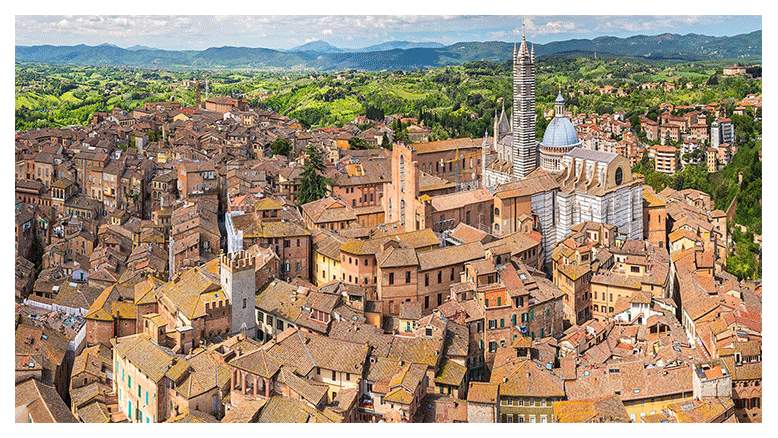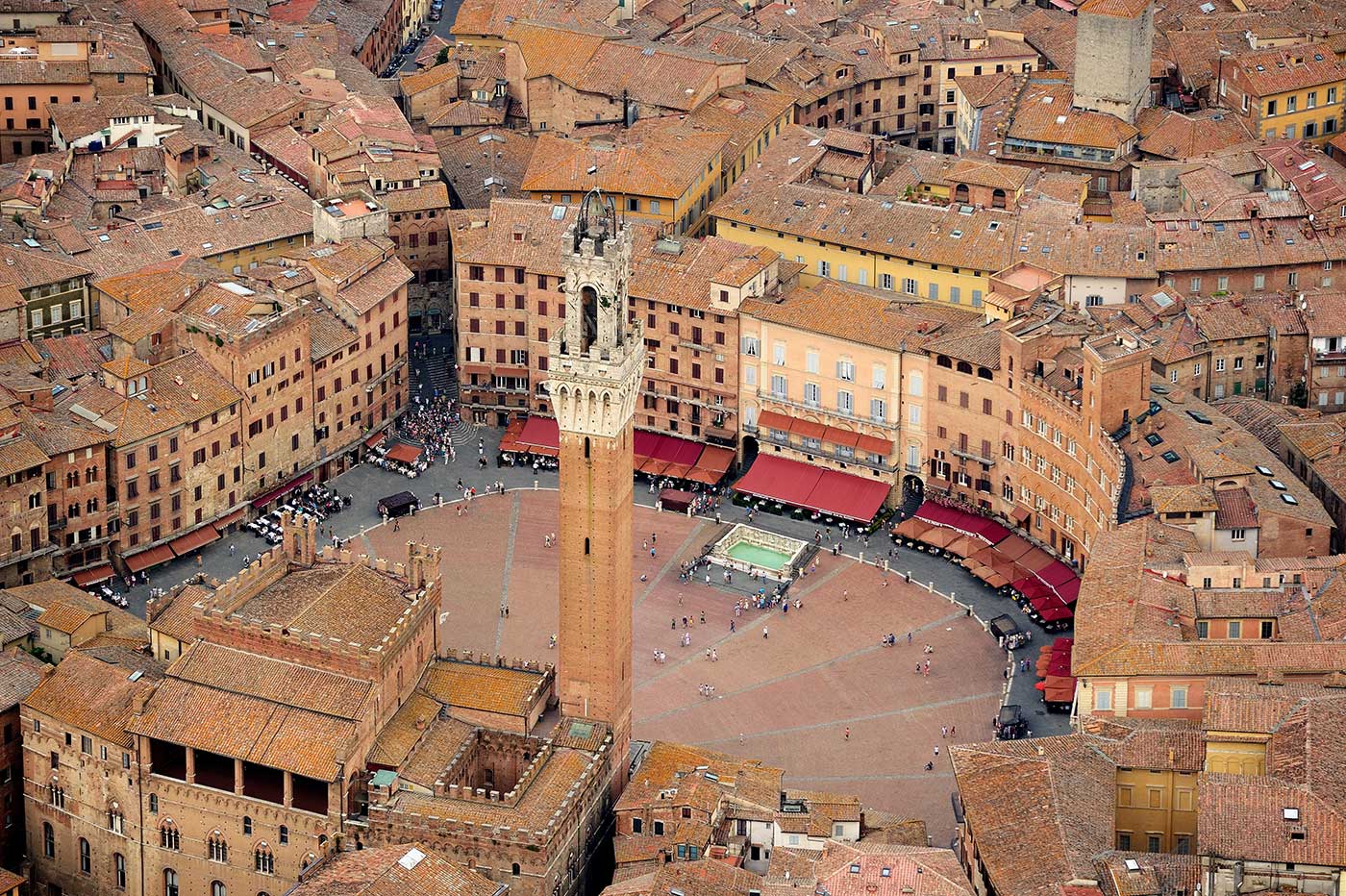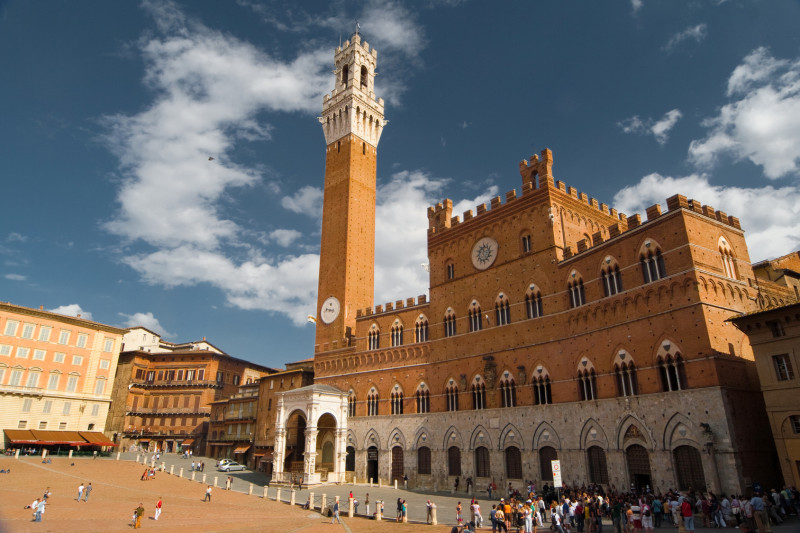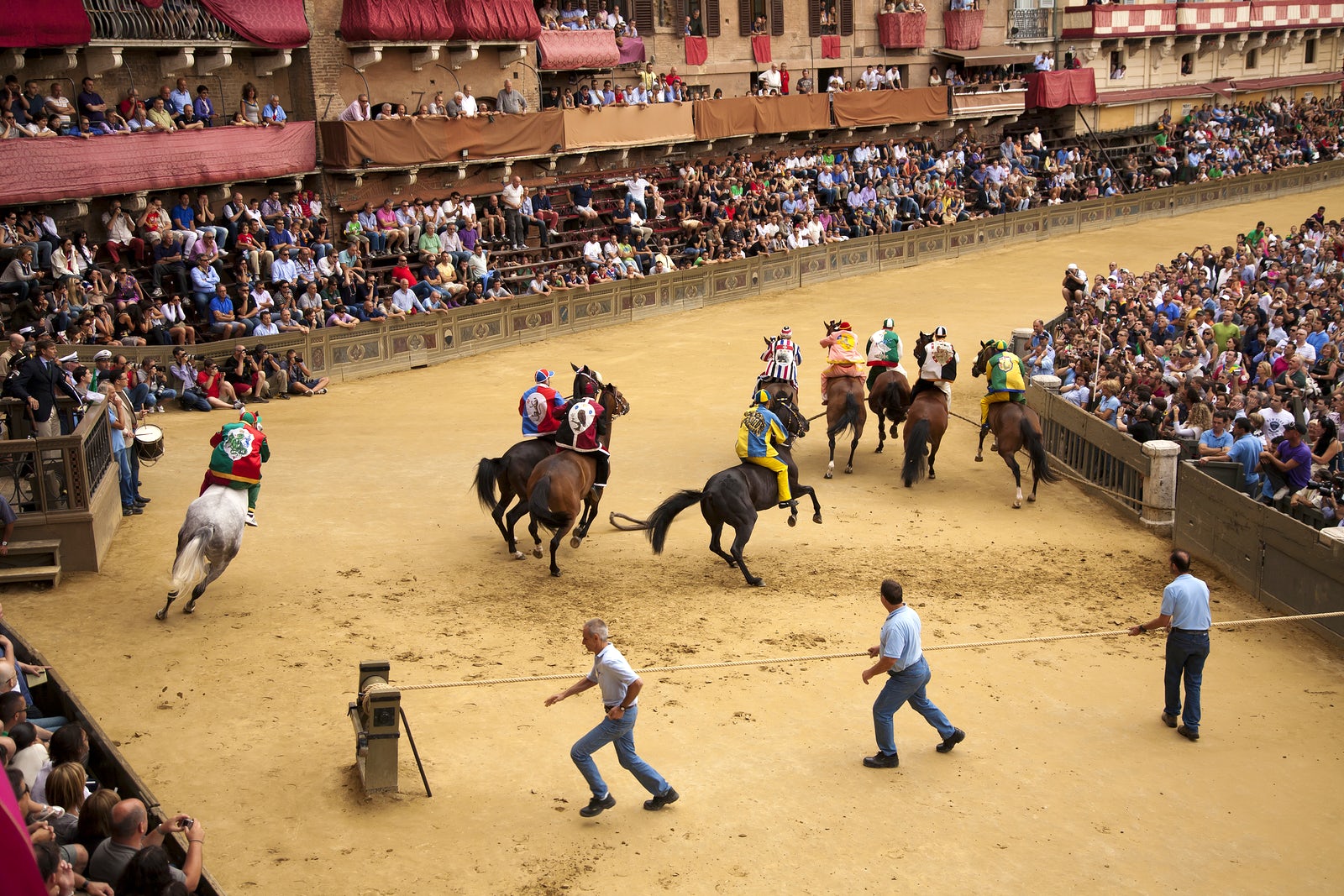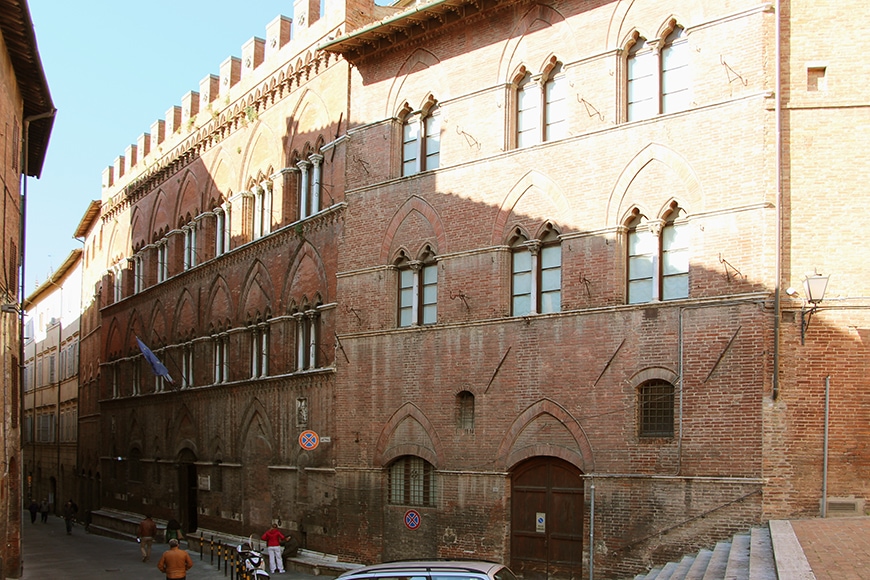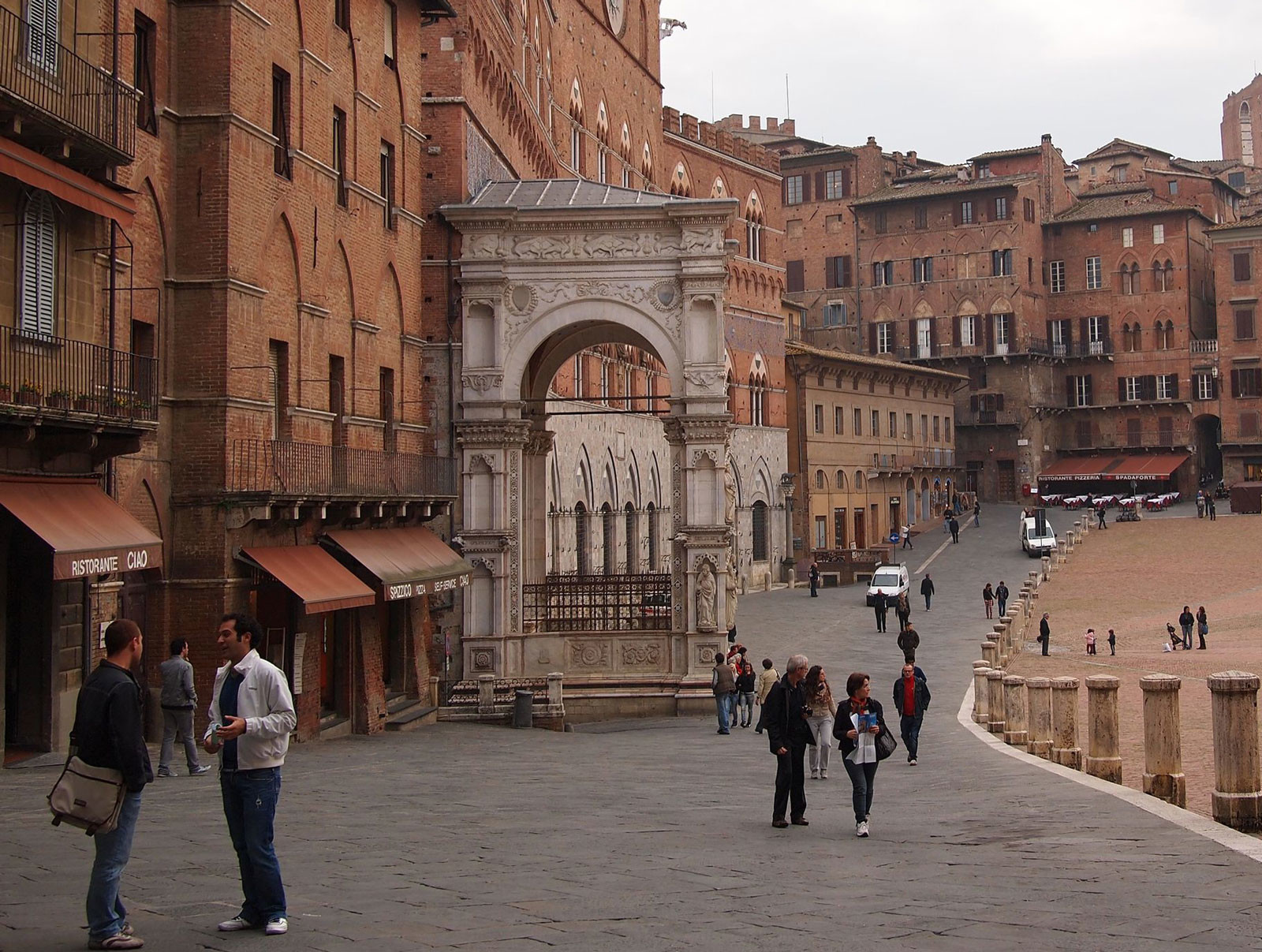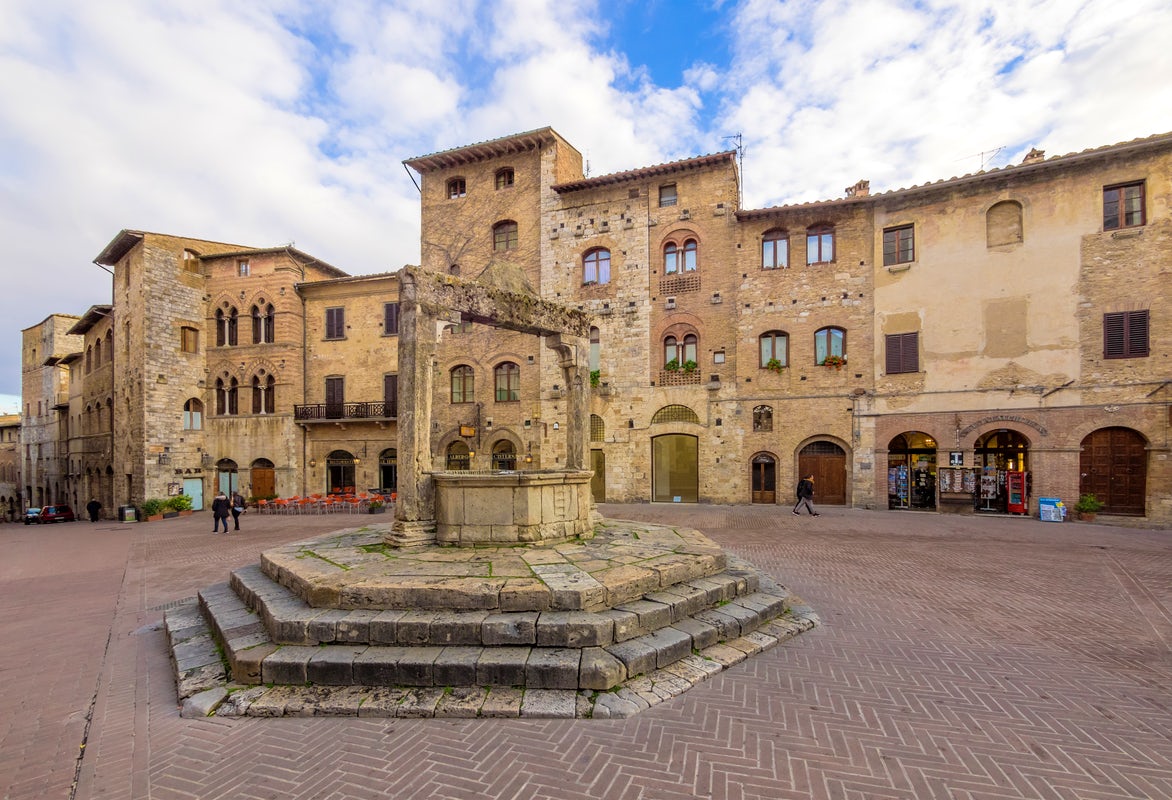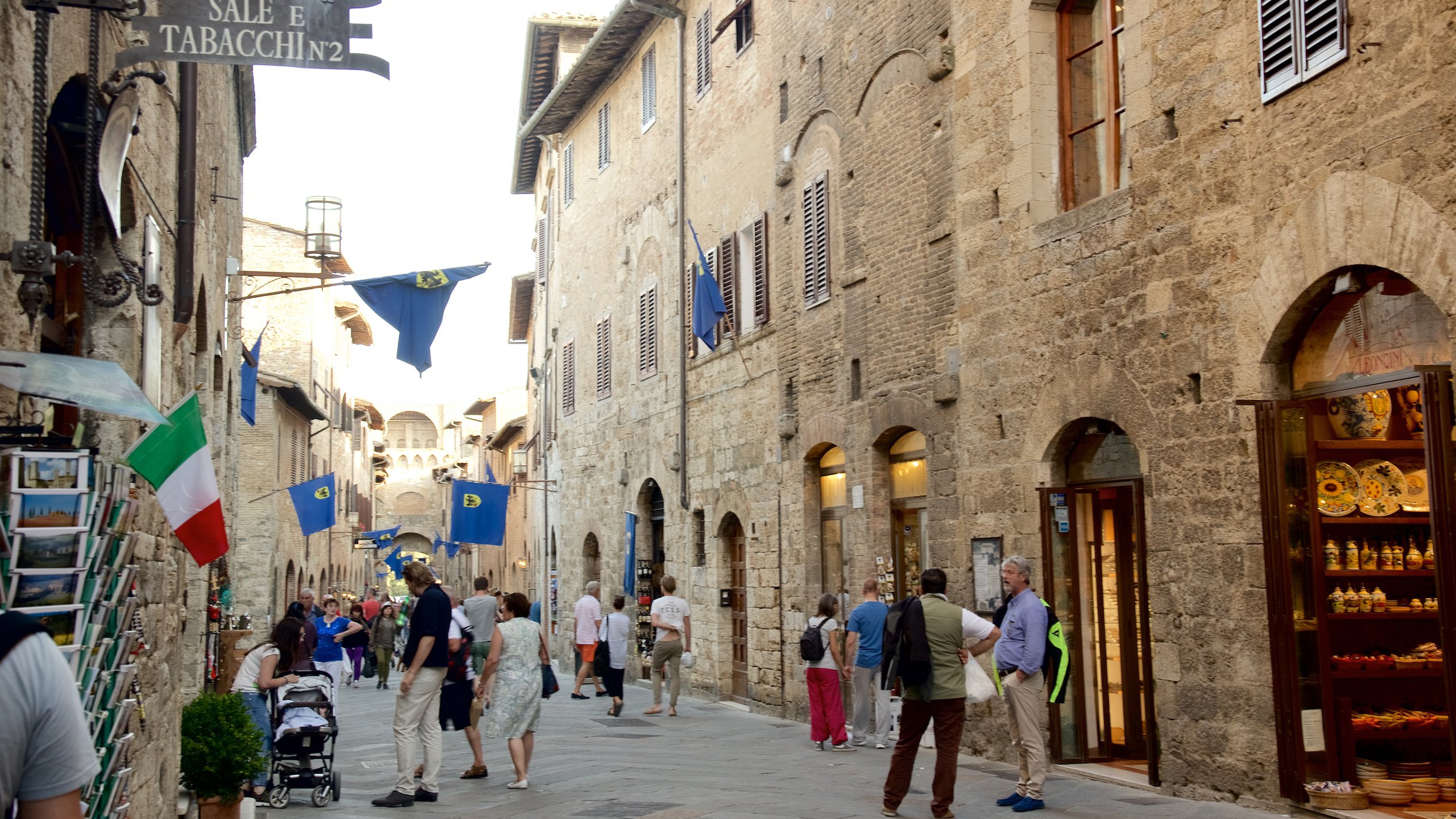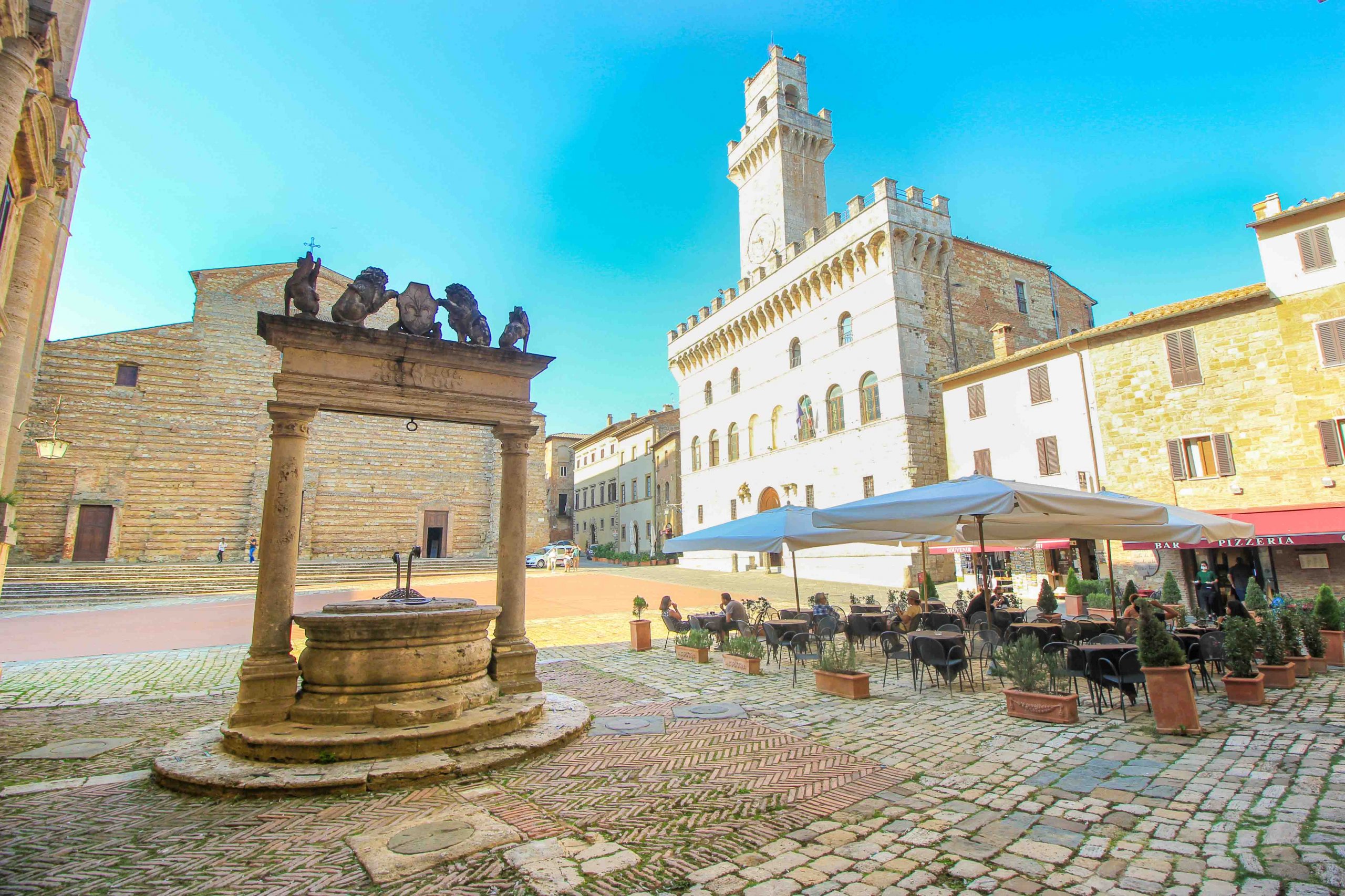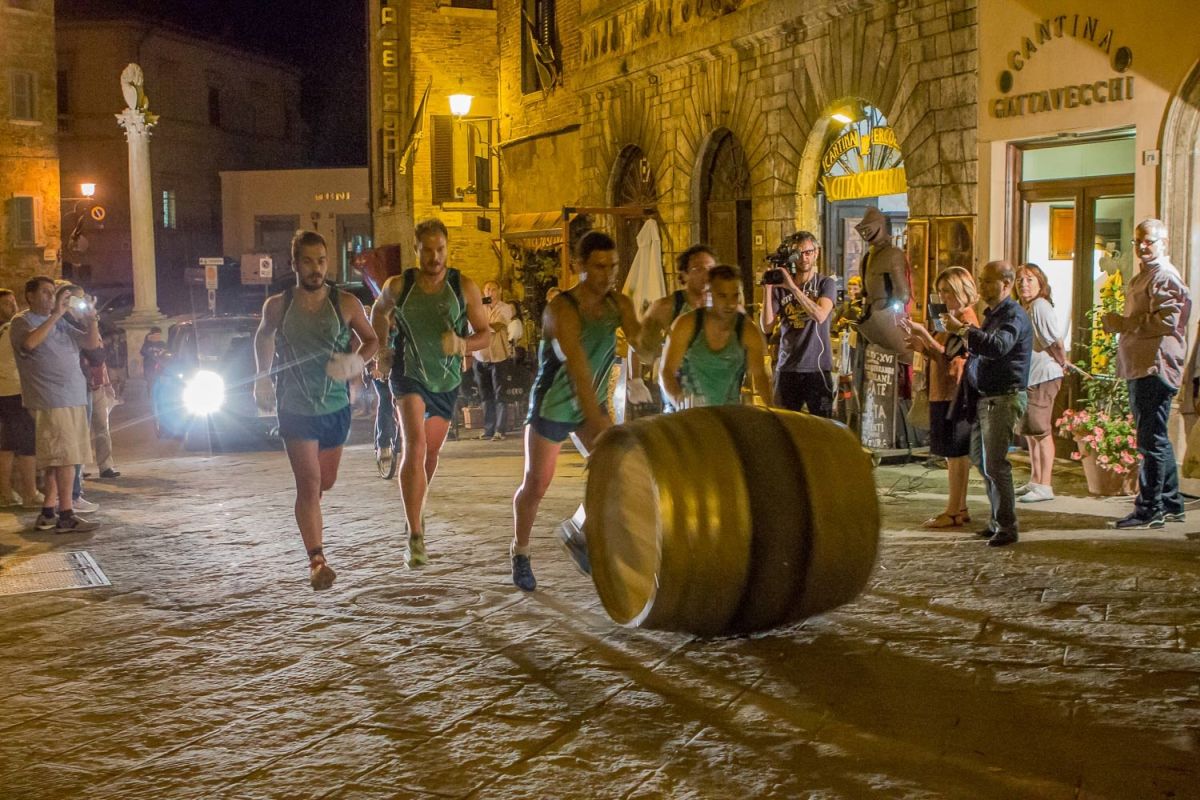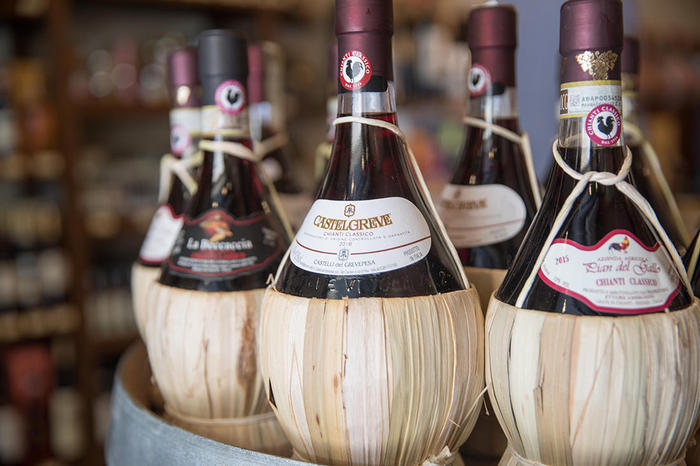Siena reflects medieval Tuscany, and its inhabitants pursued their rivalry with Florence even into the realm of urban planning. They preserved their city’s Gothic appearance through the centuries, assimilating between the 12th and 15th centuries. During the late medieval period, Duccio, the Lorenzetti Brothers, and Simone Martini had a significant influence on the course of Italian and, more broadly, European art.
The city of Siena is a work of art that blends seamlessly into the surrounding landscape. In addition to the city’s magnificent historic districts, there are lively streets filled with artisanal boutiques, sweet-smelling patisseries, pastry shops, and tempting restaurants within each ward. A Tuscan itinerary could not perhaps be complete without stopping at this feast for the senses.
Places to Visit
This blog post focuses on the medieval heart of Siena province—its Gothic town halls and renowned wine-producing towns.
SIENA CITY: WHERE GOTHIC GRANDEUR MEETS LIVING TRADITION
Siena, with its burnt-orange Gothic facades, is a rare blend of spiritual devotion and secular elegance. The city’s medieval heart beats in Piazza del Campo, famously known for the Palio di Siena, a dramatic bareback horse race held twice a year. This iconic event even found its way into the adrenaline-charged opening of James Bond’s Quantum of Solace.
Overlooking the shell-shaped piazza is the Palazzo Pubblico, a red-brick civic palace built during the rule of the Council of Nine Governors. Its slender bell tower, the Torre del Mangia, offers sweeping views of the city’s rooftops and countryside. Inside the palace lies the Museo Civico, a treasure trove of frescoes and political art, most notably Lorenzetti’s Allegory of Good and Bad Government.
Another artistic haven is the Pinacoteca Nazionale, recently renovated to showcase 14th-century masterpieces by Duccio di Buoninsegna, Simone Martini, and the Sienese school. Don’t miss the Piccolomini Library inside the Duomo—a jewel box of Renaissance frescoes painted by Pinturicchio.
Though many attempt to see Siena in a day, its layers of history, art, and tradition invite you to linger longer. Even the local libraries offer multilingual books detailing its complex past—evidence that Siena is not just a place, but a lived experience.
SAN GIMIGNANO: STONE TOWERS AND SILENT LEGENDS
Perched on a hill in the province of Siena, San Gimignano is often called the “City of Fine Towers.” Its medieval skyline—punctuated by soaring stone towers—evokes both the ambition and the rivalries of a bygone era. The heart of the old town, Piazza della Cisterna, is surrounded by historic houses and charming cafés, anchoring a town that feels almost frozen in time.
The towers, once symbols of wealth and power, were built by noble families competing for dominance. Each structure is taller and grander than the last. These vertical expressions of ego often led to long-standing feuds, dividing communities and inspiring tales of forbidden love. Local legends still whisper of secret meetings between star-crossed lovers hidden in the shadows of rival towers—a Tuscan echo of Romeo and Juliet.
I visited San Gimignano during a golden summer before the pandemic. If you’re travelling in warmer months, it’s best to arrive before 10:00 a.m. or after 5:00 p.m. to avoid the midday heat and the crowds. Beyond its towers, the surrounding Tuscan farmland, dotted with olive groves and vineyards. This adds a serene contrast to the fortified medieval core.
Inside the walls, the town’s layout is easy to explore. Winding alleys open into sunlit piazzas with churches, palazzi, and timeworn stone passageways that lead you ever closer to the past. It’s a place that rewards slow wandering and quiet wonder.
MONTEPULCIANO: WINE, RENAISSANCE, AND CINEMATIC WHISPERS
Nestled in the rolling hills of the Siena province, Montepulciano is a medieval and Renaissance gem. It is famed as much for its Vino Nobile as for its architectural elegance. The town rises gracefully above a landscape carpeted with vineyards, offering a rich blend of history, culture, and panoramic beauty.
Montepulciano’s fame grew in recent years when it served as a key filming location in Twilight: New Moon, drawing curious fans from across the world. But long before the spotlight, it quietly held treasures of its own. Renaissance palazzi, age-old cathedrals, and winding alleys lead to hidden terraces with breathtaking views over the Val d’Orcia valleys.
As you walk its steep, cobbled streets, the town slowly reveals itself—Piazza Grande, the beating heart, is framed by grand facades that glow in the golden Tuscan light. Around every corner, there are charming little nooks where time seems to pause, and the scent of wine and aged stone fills the air.
If you’re visiting Montepulciano, make time to explore the greater Val d’Orcia region as well—an area so picturesque it’s often mistaken for a painting. Check out that post where I share a funny incident on Gladiator Avenue.
CHIANTI: ANCIENT ROOTS AND THE ART OF WINE
Famed across the world, Chianti is not just known for wine—it’s revered for producing some of Italy’s finest. The region stretches between the provinces of Siena and Florence, where a combination of fertile soil, rolling hills, and a balanced climate has nurtured vineyards since Etruscan times, long before the rise of the Roman Empire.
The iconic straw-covered bottles—once synonymous with Chianti—are now mostly reserved for vintage-style productions. But the wine itself has evolved with sophistication. Whether you’re an enthusiast or a casual sipper, you’ll notice the smooth, balanced character that pairs beautifully with hearty, tomato-based Italian dishes.
Chianti is charming in all seasons. From summer vineyard tours to cosy winter tastings, there’s no fixed time to enjoy this wine-lover’s haven. Even without being a connoisseur, I could distinguish the richness of Chianti wine from others—proof that sometimes, great taste speaks for itself.

